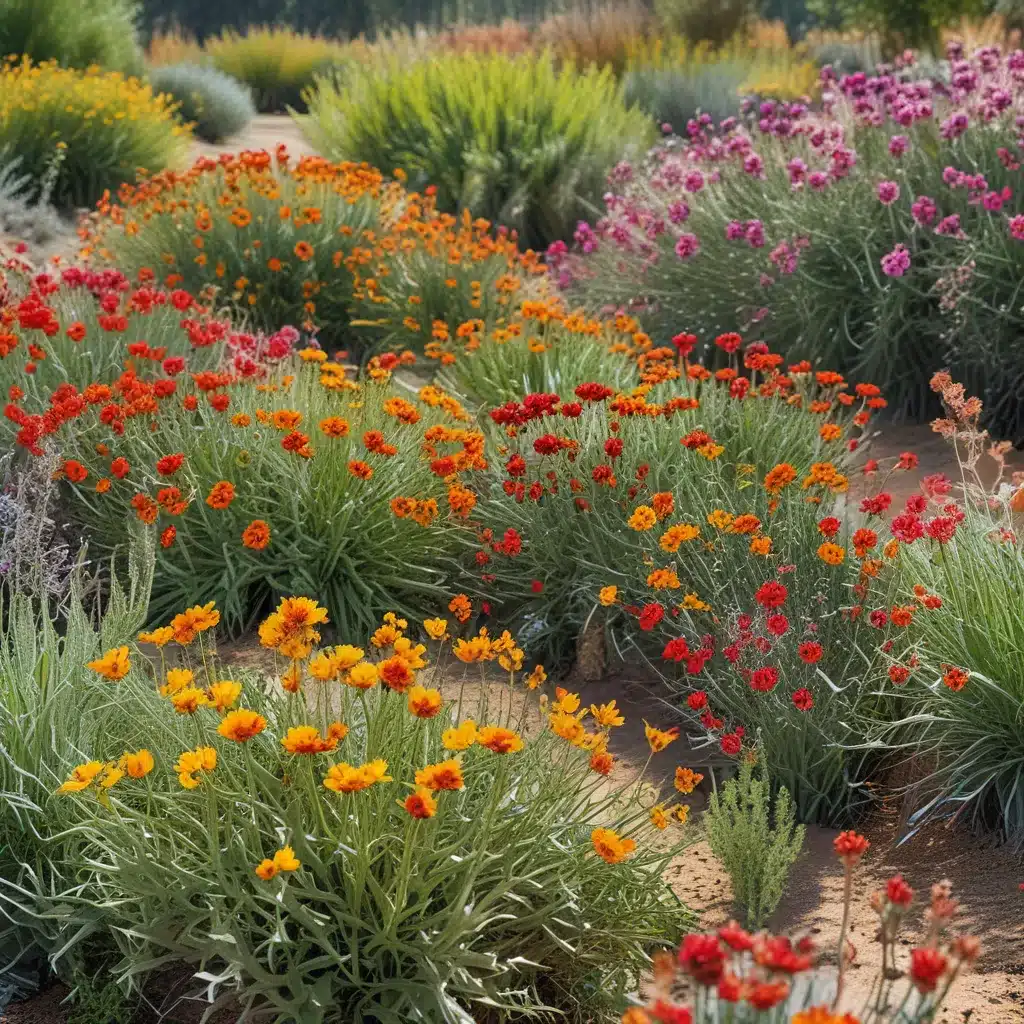
Weathering the Drought: My Journey to a Resilient Garden
As the sun beats down relentlessly, I gaze out at my once verdant garden, now wilting under the scorching heat. The recent dry spell has certainly taken its toll, leaving me to ponder the fate of my beloved plants. But rather than wallow in despair, I’m determined to find a solution – one that will allow me to not just survive, but thrive, in these challenging conditions.
Inspired by Sue Sanderson’s insights, I’ve decided to embrace the power of drought-resistant gardening. No more will I be seduced by the siren call of moisture-loving plants, only to watch them wither away. Instead, I’ll be focusing on species that have evolved to flourish in arid environments, creating a lush oasis that can withstand even the harshest of droughts.
Choosing the Right Plants for the Job
One of the key lessons I’ve learned is to let nature be my guide. By observing what’s already thriving in my garden, I can identify the true champions – the plants that have no qualms about weathering the dry spells.
Take the Trachycarpus, or Windmill Palm, for instance. While my beloved Sorbus tree is suffering, this hardy specimen is positively reveling in the challenging conditions. As Sue pointed out, “it is positively flourishing” – a testament to its drought-resilient nature.
Likewise, the Sempervivums, or Houseleeks, have been an unexpected delight. These resilient little succulents have been “popping up all over the place” since I repotted them into a gritty soil mix. Their fleshy leaves and impressive ability to store water make them the perfect addition to my new drought-resistant garden.
Embracing the Power of Colonizers
Another strategy I’ve adopted is to take advantage of nature’s own colonizers – the plants that eagerly spread and claim their territory, no matter the conditions. Sue’s Harts Tongue Ferns and Trachystemon are shining examples, having established themselves as dominant forces in her garden.
In my own plot, I’ve been delighted to see the Trachystemon orientalis, with its coarse heart-shaped leaves and Borage-like flowers, creating dense ground cover. Not only is it tolerant of dry shade, but it also provides a valuable nectar source for early spring pollinators. And let’s not forget the Stipa tenuissima, or Feather Grass, with its billowing movements that add a touch of grace to my borders.
Succulents and Evergreens: The Drought-Defying Duo
Of course, no drought-resistant garden would be complete without the inclusion of succulents. The RHS Chelsea Plant of the Year 2019, Sedum ‘Atlantis’, has certainly caught my eye with its showy blooms and impressive ability to thrive in sunny, well-drained spots. And there’s a whole host of other Sedum varieties just waiting to be explored.
Alongside the succulents, I’ve also discovered the joys of evergreen species. The variegated foliage of Euonymus japonicus ‘Ovatus Aureus’ has become a reliable year-round presence in my garden, providing structure and color even during the driest of summers. As Sue notes, “this tough resilient plant” can tolerate the dry conditions without issue.
Maximizing Water Efficiency: Potted Beauties and Saucer Tricks
Of course, even the most drought-resistant plants will need some extra attention during the hottest, driest spells. That’s where my strategy of growing delicate flowering plants in pots comes into play. As Sue points out, “it also allows me to focus all my watering efforts in one place.”
And speaking of watering, I’ve been implementing a clever trick that Sue shared – using saucers under each pot to catch the escaping run-off and save on water wastage. It’s amazing how much difference these small adjustments can make in conserving precious resources.
Striking a Balance: Embracing Nature’s Gifts
As I continue to cultivate my drought-resistant garden, I’m reminded of the importance of striking a balance between our human desires and nature’s own inclinations. As Sue so eloquently put it, “Why spend hours nurturing a moisture-loving plant that will never thrive on a dry soil?”
Instead, I’ve chosen to let nature take the lead, embracing the plants that have proven themselves capable of surviving and thriving in the face of adversity. And you know what? The results have been nothing short of stunning. My garden has become a tapestry of vibrant colors, intricate textures, and a thriving ecosystem that hums with the activity of pollinators and other beneficial insects.
Lessons Learned: Adapting to a Changing Climate
As I reflect on my journey to a drought-resistant garden, I can’t help but feel a sense of empowerment. Gone are the days of frantic watering and the heartbreak of watching beloved plants wither away. Instead, I’ve learned to work with the hand that Mother Nature has dealt me, and the rewards have been immense.
The Thornapple Community-Supported Agriculture (CSA) service has been an invaluable resource in this process, providing me with the knowledge and inspiration to create a thriving oasis in the midst of dry conditions. And as the climate continues to evolve, I know that the lessons I’ve learned here will only become more important.
So, if you find yourself facing the challenges of a drought-stricken garden, take heart. With a little creativity, a dash of resilience, and a deep appreciation for nature’s own champions, you too can transform your plot into a drought-resistant haven. After all, as the saying goes, “Bloom where you’re planted” – and in my case, that means embracing the power of drought-resistant gardening.



